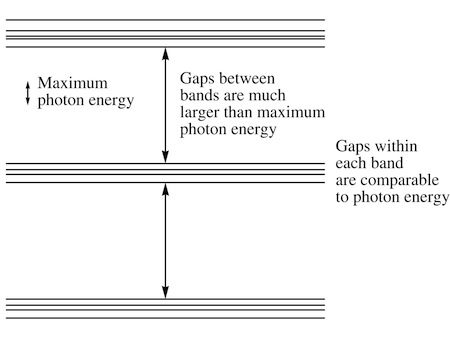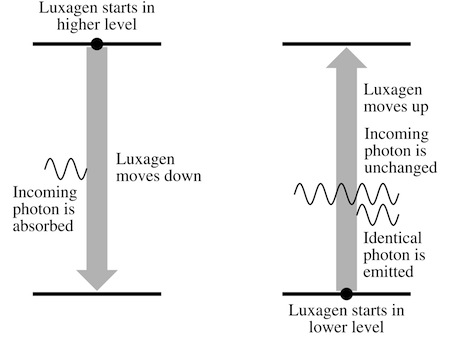The Eternal Flame (28 page)
Authors: Greg Egan
Tags: #Science Fiction, #General, #Space Opera, #Fiction

“I think I should go. Give Tamaro my regards.” She took hold of the rope behind her and began to pull herself out of the harness.
“Don’t bother coming back,” Erminio said. “I have more than enough visitors to keep me entertained. A lot of people want to show their support. They know our punishment was an injustice.”
Tamara dragged herself out of the room. “That was quick,” the guard said.
“My father’s a great communicator,” Tamara replied. “It never takes him long to get his message across.”
The guard regarded her with weary amusement. “It took him a bell and a half yesterday.”
On her way back to the summit she couldn’t stop thinking about Erminio’s claim to have supporters. When she’d asked for leniency for her kidnappers, she’d hoped that would deprive them of any trace of sympathy. One year
an injustice?
The Council took autonomy seriously; the sentence could have been six times longer, if she’d called for that.
Imprisoned and disgraced, Tamaro had still found a co-stead in no time at all. The Council had judged her father to be the instigator of the crime, but apparently he still had friends. Everyone she knew had told her to her face that they were outraged by what had happened to her, but she understood that she’d be fooling herself if she took that sentiment to be universal. Three generations away from the old world and its barbarities, there were still people who believed that a woman’s life was a kind of
tenancy
, devoted to protecting—and in due course, meekly vacating—a body that was never really her own.
28
C
arla threw the tarpaulin aside and dragged herself out of bed. Still half asleep, she approached the food cupboard and tugged on the handle, but the door refused to budge. She recalled sliding the bolt into place the night before: her reminder that this was meant to be a fast day.
Had it really been three days since the last one? Her gut squirmed in disbelief; it had learned to follow a daily cycle, but these calendrical variations were too arcane to be internalized. She ran a finger over the cross-bar at the side of the bolt, pondering excuses for breaking the rigid pattern. Today was her first appearance before the Council; any day without food was hard enough, but short of her life-or-death encounter with the Object she had never needed her wits about her more. She could eat today and fast tomorrow.
She tugged at the cross-bar and began guiding it through the little maze of obstructions she’d built that made it impossible to disengage the bolt unless she was fully awake. Halfway through, she paused. Breaking the pattern would set a precedent, inviting her to treat every fast day as a potential exception. Once the behavior that she was trying to make routine and automatic had to be questioned over and over again, the whole scheme would become a kind of torture, a dozen times harder to follow than it was already.
She returned the cross-bar to its starting position and dragged herself away from the cupboard. Once she was back to her old mass, she could resume the old routine: one loaf every morning, like clockwork.
Carla stepped forward and faced the assembled Councilors across the brightly lit chamber. Behind them, portraits of Yalda, Frido, and the dozens who’d followed them crowded the wall. That her old friend Silvano was among the
Peerless
’s twelve current leaders did nothing to put her at ease; it just made the encounter more complicated. Addressing an audience whose personal histories were uniformly opaque to her would at least have made it easier to stop fretting about these people’s individual agendas and just put the merits of her own case as best she could.
Assunto had warned her that if she wanted to be taken seriously she needed to quell any instinct for deference and resist averting her eyes. She followed his advice—but to stop herself feeling intimidated she focused her attention on the fellow crew members gathered behind her.
“So far as we understand it,” she began, “every solid and every gas in the cosmos is built from luxagens. From a cosmic perspective all luxagens are identical, but because their histories through four-space are marked with a kind of arrow—Nereo’s arrow—we can distinguish between those luxagens whose arrows point toward our future and those whose arrows point toward our past. By convention, we call the first kind ‘positive’ and the second ‘negative’.
“The peculiar histories of the Object and the
Peerless
have led to a curious disjunction: although our thermodynamic arrows of time agree, the arrows on our luxagens do not. The
Peerless
and everything it carries is built entirely from positive luxagens, the Object entirely from negative ones. And as the
Gnat
’s experiments showed us, if positive and negative luxagens are brought together they will annihilate each other. The purely
chemical
variation of the materials available to us is of no help here: no rock or resin, no plant material or animal product, no gas or smoke or dust will be immune to this effect.”
Carla allowed herself a quick glance at Silvano. His expression was grim, but she believed she was about to improve his mood considerably.
“There is one thing, though, that can safely interact with the material of the Object: light. Light does not itself produce light, so its history isn’t marked with Nereo’s arrow: there is no ‘positive’ light and ‘negative’ light. The starlight from ordinary and orthogonal stars falls on both us and the Object alike, causing no damage to either. So if we hope to make tools that will allow us to acquire and manipulate samples of the Object, I believe that will require a new source of light.”
Councilor Giusta interjected, “So you want to drill into the Object with the beam from a giant sunstone lamp?”
“No,” Carla replied. “Brute force like that wouldn’t get us very far. What we need is a light source whose output is more
orderly
than the beam from any kind of lamp.”
She summoned a sketch onto her chest.

“The luxagens in every solid are restricted to certain energy levels,” she said. “These levels are arranged in bands. The bands themselves are so widely spaced that a luxagen can only jump between them by creating several photons at once. That’s a very slow, inefficient process—which is what makes solids stable in the first place.
“Within each band, though, the levels are close enough for luxagens to move between them by emitting or absorbing single photons. Left to themselves, most luxagens will occupy the highest possible levels in their bands, because those at lower levels will spontaneously emit a photon and move up.” Carla hesitated, half expecting someone to challenge her on these events without a cause, but either the Councilors had heard of Assunto’s strange “zero-photon” light that filled the cosmos and shook every luxagen at every imaginable frequency… or they were simply willing to accept that there would always be some kind of disturbance pushing luxagens from the most precarious states into more stable positions.
“When a photon enters a solid, it can affect the luxagens in two different ways,” she continued. “If there are luxagens in a high energy level, they can absorb the photon and move down to a lower level. And if there are luxagens in a low energy level, they can emit another photon exactly like the first, and move up to a higher level. For either of these things to happen, the energy of the photon must match the difference in energy between the two levels.”

“The two processes push the luxagens in opposite directions, and all things being equal they’d both take place at exactly the same rate. But with luck, it might be possible to find a solid where things can be kept very far from equal. Suppose we have
four
different energy levels, and we illuminate the solid with light of the right frequency to push luxagens from the highest level down to the very lowest.”

“If nothing else was going on, the same light would also give rise to the opposite process: stimulating luxagens in the bottom level to jump back up to the top. But suppose the
spontaneous
jump from the bottom level to the one just above happens very quickly—so quickly that most luxagens end up at that second lowest level instead. From there, the luxagens will spontaneously jump up one more level, and then one more again. Once they reach the top, our light will push them to the bottom again.
“Now, the photons that are emitted spontaneously will have random phases and directions, just like the light from a lamp. But suppose we put this solid between a pair of mirrors that send the light from the middle transition back and forth through the material.”

“Each time the light is reflected back through the solid, it will prompt more luxagens from the second lowest level to jump up one step, emitting photons of the same phase and in the same direction as the one passing through. But we can avoid the unwanted reverse process—where the photons we send back get absorbed, instead of duplicated—if the transition from the third level to the top one happens fast enough. If that third level is kept almost empty, there’ll be almost no luxagens in a position to absorb the light.
“By separating the mirrors by an exact multiple of the wavelength of the light we’re trying to multiply, we can reinforce a mode that is entirely parallel and in phase. If we make one of the mirrors only partially reflective, the beam that emerges from this device should be aligned like nothing we’ve seen before. A lens will focus it down to a spot whose size is limited only by the laws of optics—allowing all the power in the beam to be concentrated on a target a fraction of a scant across. What’s more, the light itself will be comprised of an orderly series of wave fronts, maintaining a regular pattern over vastly longer times and distances than the jumble of waves that we get from a lamp. So instead of the light field changing direction at random, partly canceling out its own effects, the full strength of the field can be brought to bear at the focal point.
“The stronger the light field, the greater the pressure it exerts. So I believe there’s a chance that this ‘coherent light’ could be used in much the same way as we originally hoped to use air jets: to manipulate small samples of orthogonal matter without touching them.”
Carla spread her arms: she was finished. For a pause or two all the Councilors were silent, then Silvano asked, “How far does this take us toward a new engine design?”